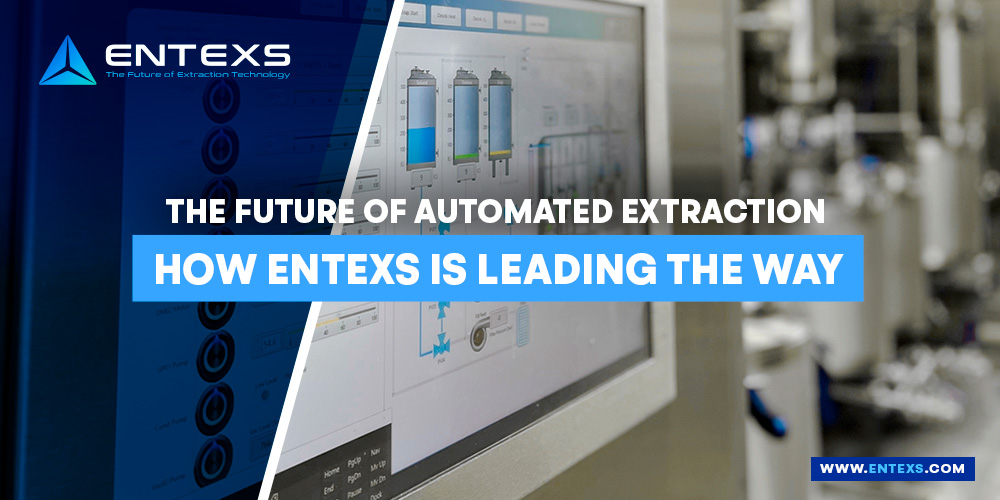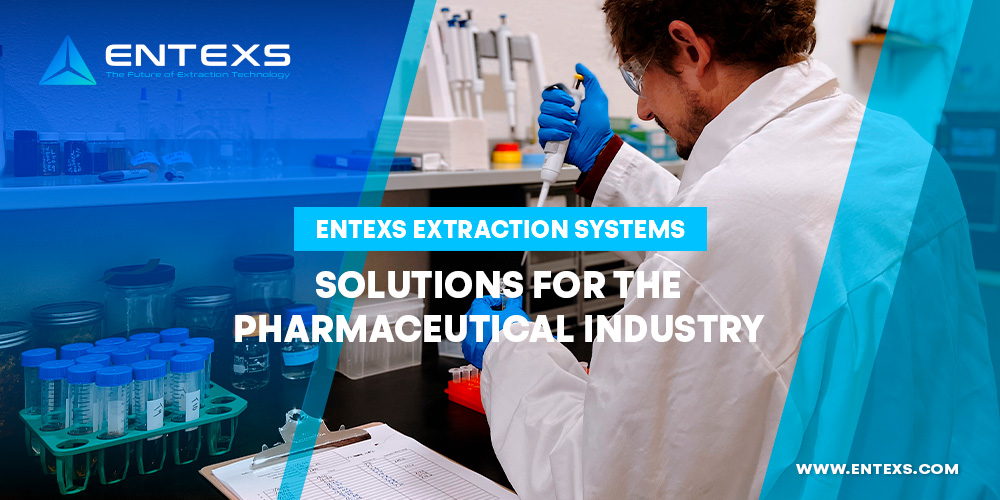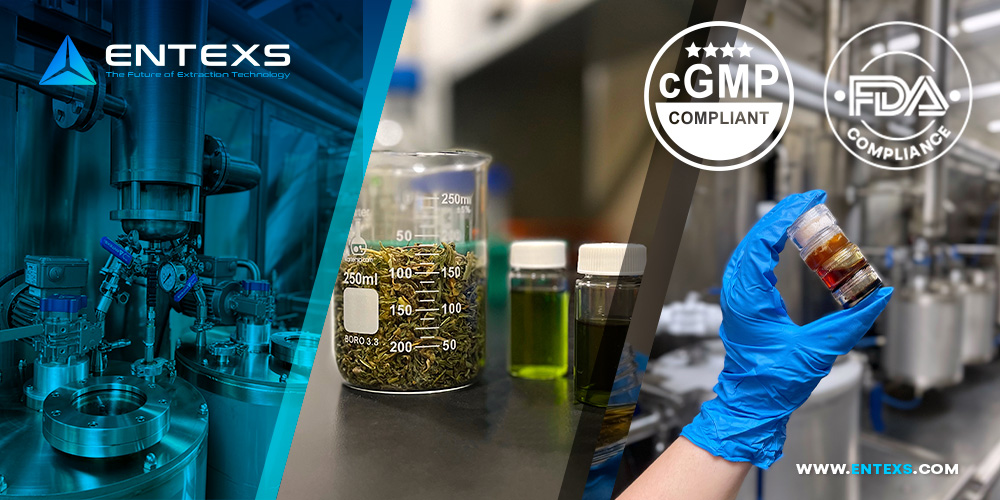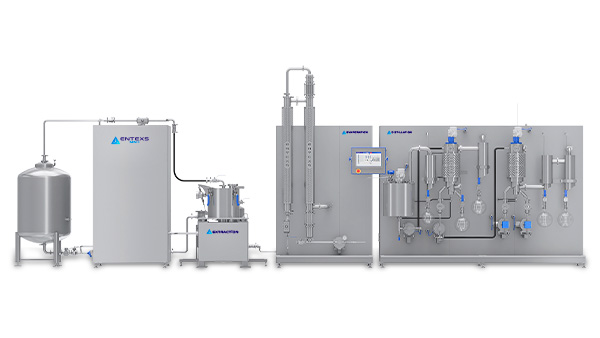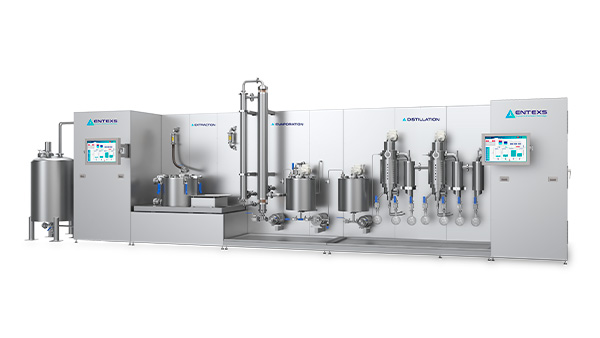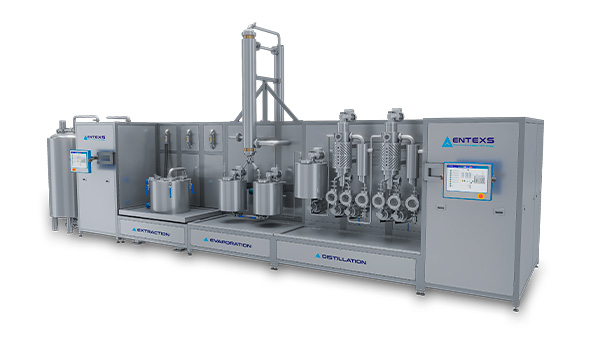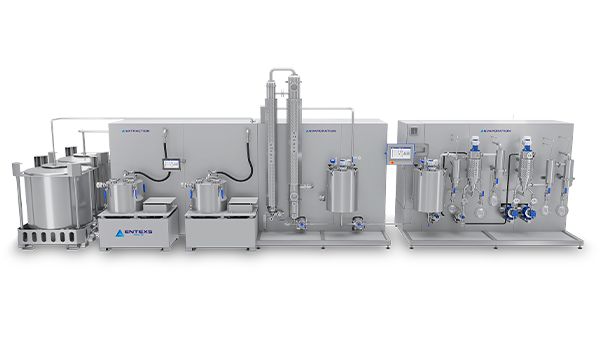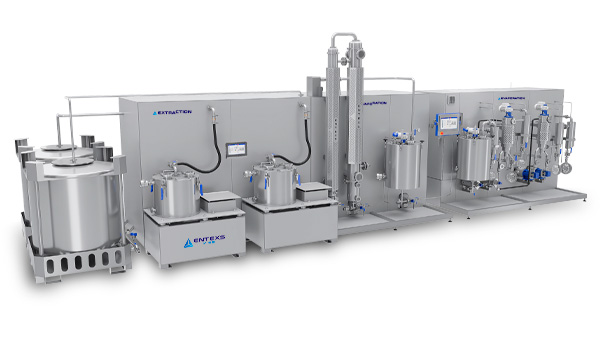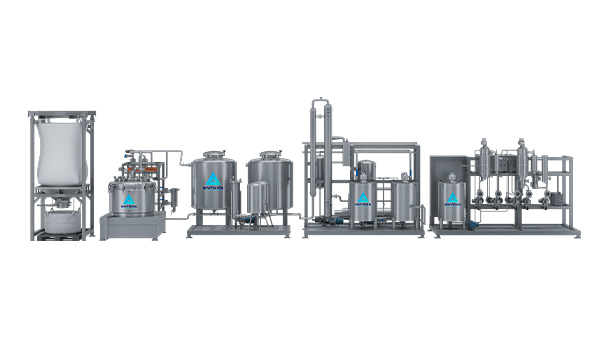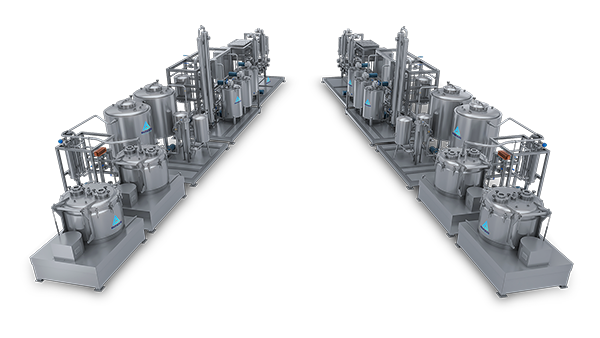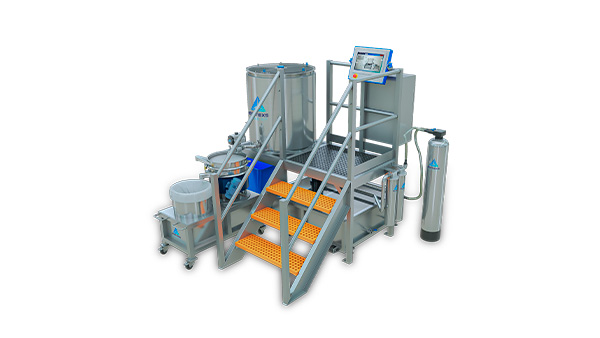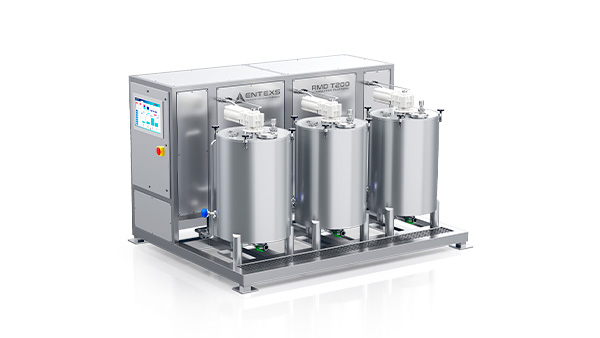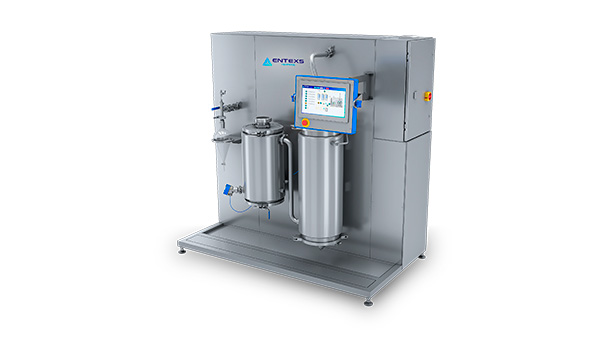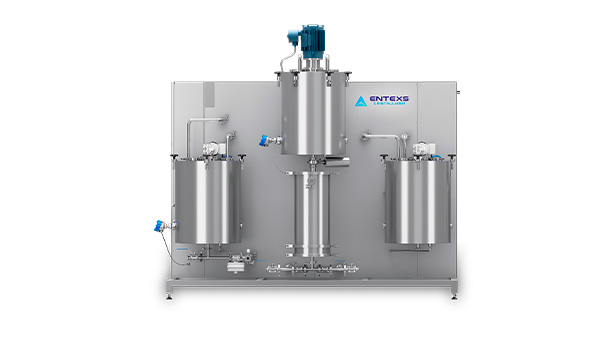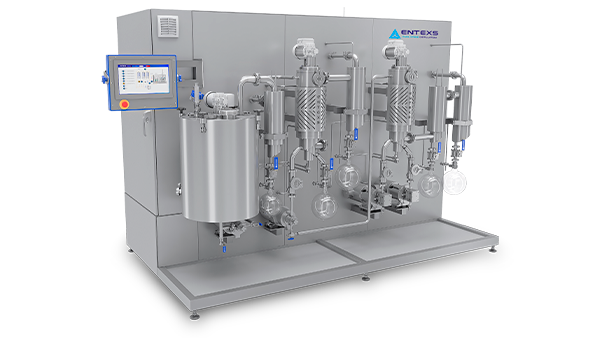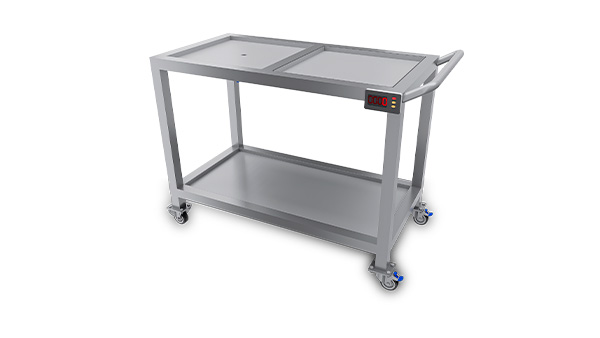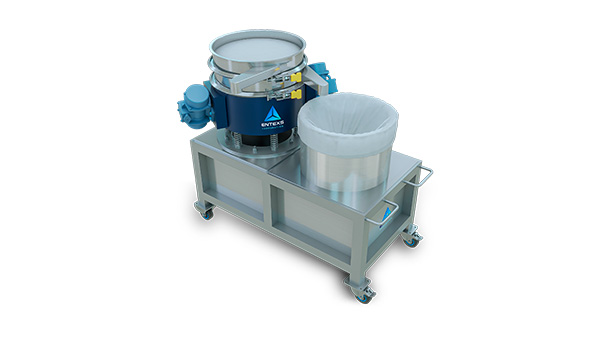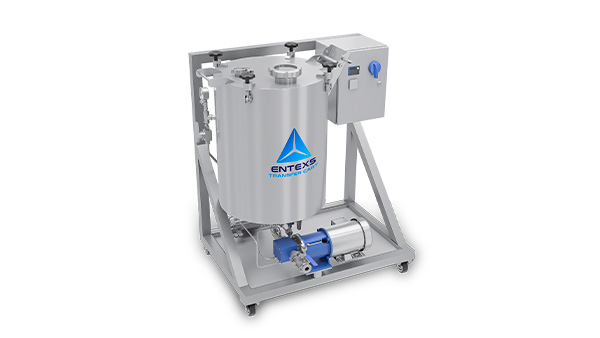Extraction 101: Summary
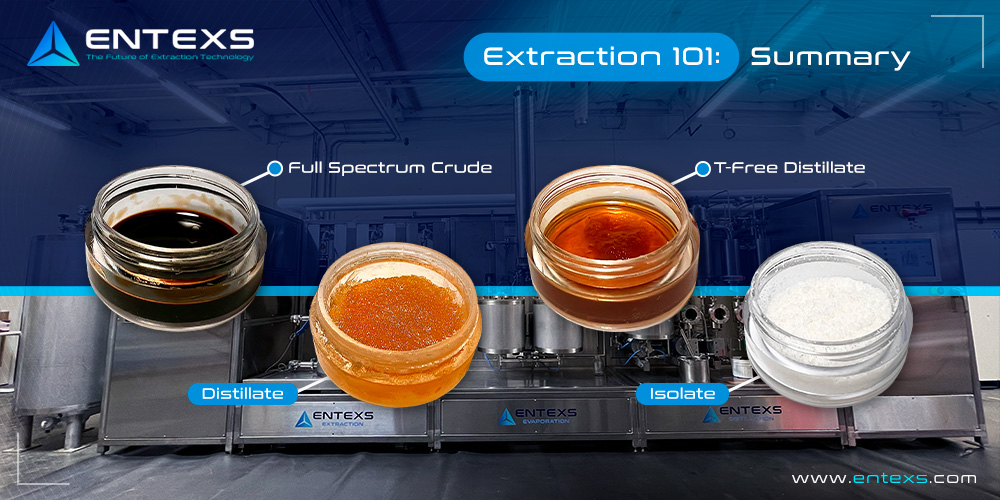
Cannabis extraction can be a complex and technical process, but it doesn’t have to be. Once you’re familiar with the steps, it’s actually fairly straightforward. We have a complete multi-part guide that goes into the specific steps of the cannabis extraction process, but if you want a simple step-by-step breakdown of how it works, you’ve come to the right place. This guide will give you a bird’s-eye overview of how CBD is extracted and what options are available to would-be cannabis processors.
What is CBD Extraction?
CBD is a cannabinoid. Cannabinoids are chemical compounds found in the cannabis plant. They’re all-natural, and the plant produces them by itself. CBD is one of the two most common cannabinoids found in the cannabis plant. The other most common cannabinoid is THC. CBD is not intoxicating. It usually produces a relaxing effect. THC is the intoxicating compound found in marijuana.
Cannabis plants that contain less than 0.3% THC are classified as hemp in the United States and are federally legal. Even though hemp plants contain only trace amounts of THC, they can contain a substantial quantity of CBD. CBD extraction is the process of using an extraction machine to pull the CBD out of the hemp plant for use in various infused products.
There are various ways to extract CBD from hemp. They all involve a solvent of some sort that breaks down the hemp. The three most popular solvents are ethanol, carbon dioxide (CO2), and hydrocarbons. Ethanol is easily the safest and most efficient of the three.
Why CBD Extraction?
CBD extraction is necessary to make many of the great CBD-infused products on the market today. If it weren’t for CBD extraction, dried hemp flower would be the only option, and that can be difficult and impractical to work with in most situations.
Rather than be stuck smoking the dried flower or using it to make butter and oils for edibles, scientists and engineers developed a process to extract just the CBD and any other desirable cannabinoids, terpenes, and flavonoids from the hemp plant, leaving the rest behind.
Extraction is a game-changer. It enables manufacturers to create infused edibles that don’t taste like cannabis, infused beverages, CBD oils, and vapes. Extraction is a major driving force behind the massive CBD boom the US experienced following the 2018 Farm Bill.
The Extraction Process
Cannabis extraction is a multi-step process. Each step serves a vital function in separating the desired parts of the hemp plant, like CBD and terpenes, and leaving behind the leaves, stems, and the other junk nobody can really use. If done correctly, the extraction process is simple, efficient, and safe. It will create a quality product with high purity with only minimal waste.
This guide will focus on an ethanol-based extraction process. Here at ENTEXS, we engineer ethanol-based extraction systems because they’re the most efficient, cost-effective, and safest to run.
Getting To Tincture
The extraction process begins by taking raw hemp plant material and exposing it to the ethanol solvent to get something called a tincture. The tincture has been used for hundreds of years medicinally. It’s essentially just a mixture of cannabis extracts and alcohol. The tincture is usable by itself, but most cannabis processors are looking to get the CBD and other components from the hemp plant by themselves in order to have a more versatile product.
To start, high-CBD hemp buds are milled into a fine consistency and then fed into a centrifuge. The system will fill the centrifuge with ultra-cold ethanol and spin in order to separate the CBD from the rest of the plant material. Once the process is complete, the ethanol will contain the hemp’s full cannabinoid profile, including the CBD. At this point, the mixture is a tincture.
Crude Oil
The next step in extracting just the CBD, cannabinoids, terpenes, and flavonoids from the hemp plant is crude oil. Crude oil is the mixture of cannabinoids, terpenes, and flavonoids extracted from the hemp plant after the ethanol has been removed from the tincture. It’s the jumping-off point toward the more usable extracts.
Naturally, the first step to make crude oil is to remove the ethanol from the tincture. Most systems have some sort of dry cycle to pull the ethanol out of the mixture. Then, in ENTEXS systems, the remaining mixture is subjected to a two-stage process through a rising and falling film evaporation system. It ensures that as much ethanol as possible is removed from the mixture and recycled to be used again.
Following the process, what’s left is fully decarboxylated crude oil with the full spectrum of cannabinoids, terpenes, and flavonoids from the hemp plant.
THC Remediation
The next step is optional, depending on the market. If the goal is to sell high-CBD concentrates in a market where recreational cannabis use is legal, it’s not strictly necessary to remediate THC. However, for a product with THC levels that fall within the US federal legal limit, THC remediation is necessary.
When CBD and other cannabinoids are extracted from the hemp plant, they become concentrated in crude oil. That means that even if there was less than 0.3% THC in the hemp plant, there will be a much higher concentration in the crude. In order to bring the crude back within the legal limit, it’ll need to undergo THC remediation.
THC remediation is a process that specifically targets THC molecules in the crude and either removes them or turns them into a different cannabinoid. The ENTEXS RMD-T series of THC remediation systems work by converting THC into other legal cannabinoids and do so extremely efficiently. They’re so efficient that they have some of the lowest CBD loss rates on the market, below 5%.
After a successful THC remediation, the crude will be nearly as it was but will be nearly completely free of THC.
Distillation
Once the crude has been remediated, it’s ready for distillation. As the term suggests, the process is actually quite similar to alcohol distillation. The mixture is heated to the temperature needed to evaporate the desired substance. The evaporated substance rises, where it’s collected and cooled. Then, it condenses back to a liquid and is captured on the other end. Cannabis distillation is similar.
ENTEXS systems use a wiped film dual-distillation module to collect a broad spectrum of cannabinoids. They rely on both high and extremely low temperatures to ensure maximum efficiency. ENTEXS systems have multiple traps to collect cannabinoids, terpenes, and residues. The system breaks down the crude into its core components, each of which has its own potential uses.
After distillation is complete and the cannabinoids are collected, the result is known as a broad-spectrum extract. This extract can be used in countless applications from edibles to topical products.
Full-Spectrum, Broad-Spectrum, and Isolate
There are three potential types of extracts that can be produced. The steps above produced broad-spectrum extract, but that’s not the only choice for cannabis processors.
The full-spectrum extract contains all of the cannabinoids of the original plant, including THC. That means it hasn’t been remediated. Because full-spectrum extract has all of the cannabinoids of the plant, its benefits are as close to the plant as possible, including the full weight of the entourage effect.
The broad-spectrum extract produced in the previous section is close to the full-spectrum extract, but it’s missing the THC as a result of the remediation step. Since the full-spectrum extract isn’t legal in all markets, broad-spectrum is the next best thing. It’s also good for applications where the intoxicating effects of THC aren’t wanted. Even though broad-spectrum extract doesn’t have the full benefit of the entourage effect, it’s still very close.
The final type of extract is CBD isolate. CBD isolate is actually just CBD, without any of the other cannabinoids. CBD isolate is produced by dropping the temperature of a mixture of CBD to the point where the CBD becomes insoluble and starts to crystallize separately from the rest of the mixture. CBD isolate is useful for processors looking to add CBD to products without imparting any flavor or smell.
With any route, the extraction process remains the same, and the options for each type of extract are nearly limitless, as is the demand.
Contact us for more information
Contact our sales team for more information on custom CBD extraction systems, state-of-the-art THC remediation systems or preview our catalog of systems and modules available through our website.
Related Topics
- Analysis
- Cannabis Industry
- CBC Extraction
- CBD Extraction
- cbd isolate
- CBG Extraction
- cGMP
- Chromatography
- CO2
- Cold Water Extraction
- Ethanol Extraction
- Extraction 101
- Extraction Equipment
- Extraction Machine
- Extraction System
- GMP
- GMP Certification
- Hemp Extraction
- HPLC
- inline remediation
- Remediation
- Remediation Equipment
- Terpene Extraction
- terpenes
- THC
- THC Remediation
- All
- Extraction
- THC Remediation
- All
- Extraction
- THC Remediation
- Email: info @ entexs.com
- Toll Free: (888) 960-3689
- 3720 Trade Way, Cameron Park, CA 95682, USA
- ENTEXS is proud to be made in the USA
- © 2025 ENTEXS Corporation
- Privacy Policy

